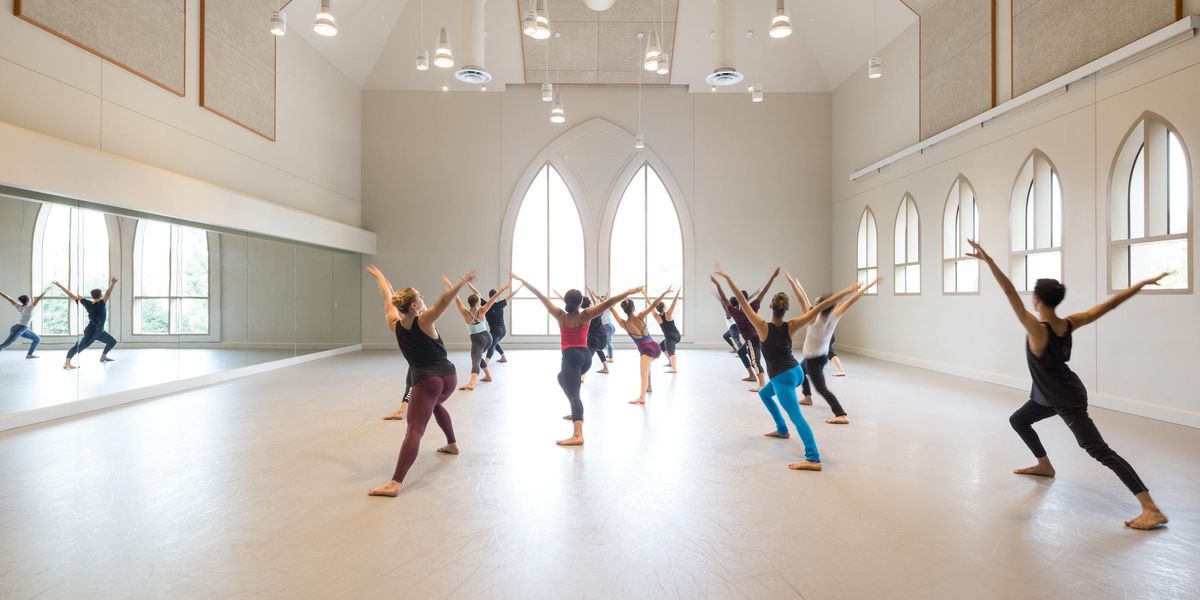Are We Done Crowdfunding?
Why dance companies have started looking beyond Kickstarter.
Traverse City Dance Project, here in Jodie Gates’ Delicate Balance, is trying new fundraising tactics. Photo by Susan Kettering, courtesy TCDP.
Last year CHOP SHOP: Bodies of Work, a contemporary dance festival in the Seattle area run by Eva Stone, ran into a severe funding issue. After seven years of grants from a local arts organization, a bureaucratic snafu disqualified the event from receiving the money Stone had planned on. At the last minute, Stone launched a Kickstarter campaign. “The bottom line message was, Pitch in or we are dead,” Stone says. “I asked for $8,000 and we made it. But I felt like it was a one-shot deal. I knew if I did it again, it wouldn’t be as successful.”
It’s no surprise that crowdfunding through sites like Kickstarter and Indiegogo has changed the way dance companies fundraise. The idea of raising money online through small contributions from a large number of people came onto the dance scene at the height of the great recession, right when big, reliable donors and corporate philanthropy programs had less money to allocate. Since Kickstarter’s launch in 2009—which brought the techie idea into the mainstream—more than 1,800 dance projects have been funded through the site, the bulk of them raising between $1,000 and $10,000.
But the golden-ticket model of crowdfunding is beginning to lose its veneer. Many choreographers and directors, frustrated with the limits of crowdfunding, are now finding their way back to more traditional fundraising practices, finding that the best approach to sustainability is a combination of analog and digital, in person and on screen.
“For individual artists with smaller budgets, crowdfunding is a lot more work than they think,” cautions Shawn René Graham, artist services manager at The Field, a nonprofit organization in New York City that offers services and support for performing artists. “If you start a campaign, you must engage in constant follow-up and announcements to meet your goal. A crowdfunding campaign does not mean that people you don’t know will just find it and decide to donate. You have to engage them. You need a target audience before you start.” Claire Baum, artist services and communications associate at The Field, insists the same skills are required as in traditional development: You have to be a strong writer, create compelling visuals and be prepared to do the ask. “Those are skills that choreographers are not necessarily trained to have,” she says, “but crowdfunding is not a shortcut.”
Often the only people who see your campaign are those in your social media network, which can put you at risk of exhausting their funds and patience. For the past three years, Jennifer McQuiston Lott and Brent Whitney, co-founders of Traverse City Dance Project, a summer pickup company in Michigan, have been able to raise a quarter of their budget and engage with potential patrons outside of the Traverse City area through crowdfunding. But they’ve grown tired of constantly pushing the fundraiser on friends and family through Facebook. “I’ve had friends apologize for not being able to donate,” Whitney says. In order to avoid donor fatigue and start creating more separation between personal and professional relationships, Lott and Whitney plan to establish the company as an official nonprofit, a 501(c)(3), in order to pursue more of their funding through grants and corporate donations. “We may do one more crowdfunding campaign for next year—for more specific needs—but moving forward, we would like to be less dependent on it, and hope to be recognized as a valuable arts organization that the community will invest in.”
Alex Ketley’s Poem, presented at CHOP SHOP 2015. Photo by Rex Tranter, courtesy CHOP SHOP.
That route can actually be more lucrative. “One of the horrors of Kickstarter is that you can get within 94 percent of your goal and then not receive any of the money,” says Baum. To that end, every artist sponsored by The Field has a page on the organization’s website where patrons can give to the artists directly—there is no need to meet a goal in order to receive those funds.
Instead of returning to crowdfunding for the 2016 iteration of CHOP SHOP, Stone decided to expand her team by organizing an advisory committee of volunteers who believe in the organization and are dedicated to the cause of raising money, similar to a board. “They get the same pitch as Kickstarter, but they get to hear our story more intimately, help us raise money in the community and act as a sounding board for future plans,” she says. While Stone feels done with crowdfunding for the time being, the experience taught her a lot: “I learned the art of asking for money. I also learned that I hate it.” No matter how they raise money, dancemakers have found that the key is to develop lasting relationships along with the pitch. Using technology can be a powerful development strategy, but just one among many in your fundraising toolbox.
A former dancer, Candice Thompson is a frequent contributor to Dance Magazine




